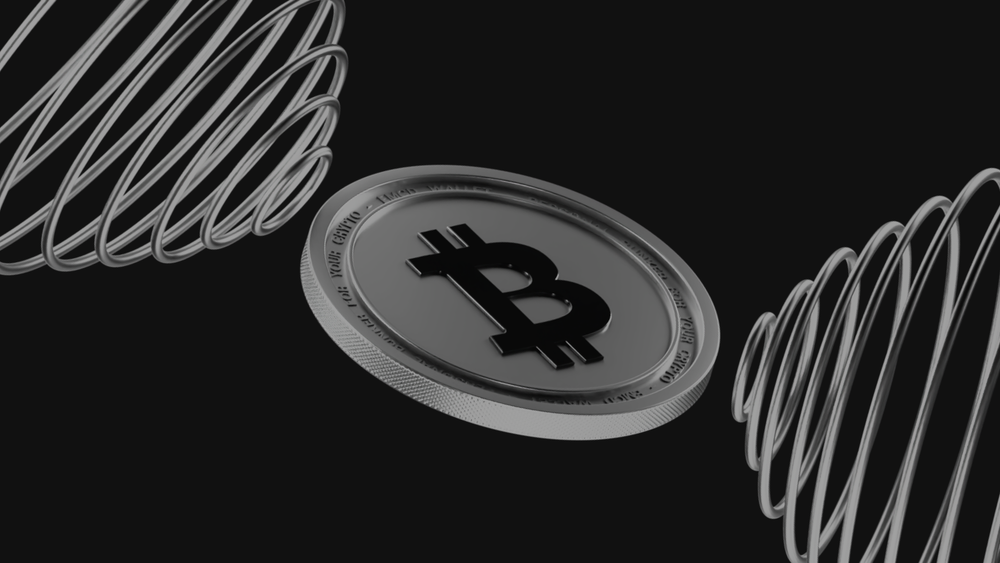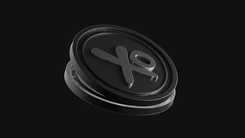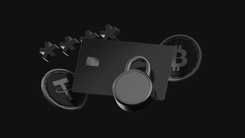How to Mine Bitcoin: A Complete Guide for Beginners and Pros

In 2025, Bitcoin mining remains a vital part of the network and a way to earn from digital assets. This guide will help you understand the technology, choose the right hardware, calculate profitability, and avoid common mistakes.
- What is Bitcoin and How Does Mining Work — In Simple Terms
- Why Mining Bitcoin Still Makes Sense in 2025
- Choosing Equipment — Only ASICs, No GPUs
- Step-by-Step Software Setup
- Best Mining Pools for Bitcoin
- How to Calculate Profitability: Formula & Tools
- Power & Cooling — What a Mining Rig Consumes
- Common Mistakes That Cost Money
- How to Store and Withdraw Mined BTC Safely
- Post-Halving Outlook: What’s Next for Mining?
- FAQ
What is Bitcoin and How Does Mining Work — In Simple Terms
Bitcoin is the first cryptocurrency, launched in 2009, and quickly gained popularity. Mining is the process of confirming transactions and securing the network by solving complex mathematical problems. Miners are rewarded with coins for their work. Mining is based on the Proof-of-Work system, where devices must perform actual computational tasks to record new data on the blockchain.
Bitcoin has a strong reputation due to its robust network and infrastructure. Its role in the global financial system continues to grow each year.
Why Mining Bitcoin Still Makes Sense in 2025
Despite high competition and the recent halving (a pre-programmed event that cuts the block reward), mining Bitcoin remains profitable. Major companies and individual miners continue to expand their farms and invest in new equipment. Rising Bitcoin prices have boosted potential profitability. However, ASIC prices changed unevenly after the 2024 halving — some models rose in price, others fell, depending on demand and region. There is no confirmed trend of overall price growth. Meaning mining still requires a significant investment and risks remain. Interest in mining is also supported by Bitcoin’s long-term investment potential and its role in portfolio diversification.
Bitcoin is less volatile than most altcoins, though still significantly volatile itself. In 2025, its 60-day volatility averages around 50%, compared to 200%+ in early years. While some altcoins may see sudden price swings due to hype or manipulation, Bitcoin tends to show more stable behavior. That said, those willing to take risks might try mining lesser-known coins and converting the rewards into Bitcoin.
Choosing Equipment — Only ASICs, No GPUs
Mining Bitcoin with GPUs is no longer practical. In 2025, network difficulty has increased to the point where GPUs provide too little hash rate and consume too much power. The electricity costs outweigh the rewards. However, this is true only for Bitcoin’s SHA-256 algorithm. GPUs remain useful for mining other proof-of-work cryptocurrencies (such as Kaspa or Ergo), and many miners still use them to mine those altcoins and then exchange the earnings for Bitcoin.
Only ASIC miners (specialized mining devices) offer the performance and efficiency required for Bitcoin mining. They’re tens of times faster and more energy-efficient. Key factors in choosing an ASIC include hash rate, power consumption, price, and lifespan. Popular models include:
- Antminer S21 Pro: 234 TH/s, 3531 W, ~$4700
- Antminer S21+: 235 TH/s, ~3877 W, ~16.5 J/TH (efficiency)
- Whatsminer M60S: 180 TH/s, 3400W, ~$3800
These devices consume less energy per TH/s and last longer than GPUs.
Step-by-Step Software Setup
Connect the ASIC miner – Plug the miner into a grounded power supply and stable internet. Ensure your electrical system can handle the load. Provide proper ventilation or cooling.
Access the miner’s control panel – Find the miner’s IP address via your router or an IP scanner tool. Enter the IP in your browser and log in with the default username and password.
Choose and install custom firmware – Stock firmware isn’t always the most efficient. Consider these alternatives:
- Braiins OS: Open-source, great for optimizing power usage and boosting hash rate
- Hiveon ASIC: Cloud-managed firmware (previously ideal for managing multiple miners), but as of 2025 it offers limited support for new ASIC models since Hiveon has shifted focus to cloud management and GPU mining. Braiins OS is now generally recommended as a better alternative for ASIC firmware
To install, download the firmware from the official site, upload it via the miner’s interface, and reboot. Make sure the firmware is compatible with your model.
Configure your mining pool – In the miner’s configuration section, enter the pool address, worker name (username), and backup pool addresses.
Start mining and monitor – After setup, mining will start automatically. Use the web interface to monitor temperature, hash rate, and connection status. Regular firmware updates and system monitoring help maximize efficiency and prevent overheating.
Best Mining Pools for Bitcoin
Choosing the right mining pool is crucial, as it directly impacts the stability of your payouts, the fees you pay, and your overall earnings. When evaluating pools, focus on three key factors: low commission rates (ideally between 1% and 2.5%), consistent uptime with fast payouts, and the physical location of servers. The closer the server is to you, the lower the latency, which improves mining efficiency and connection stability.
Among the top recommended pools in 2025 is EMCD Pool, which charges a 1.5% fee and offers a global server network, Russian-language support, and particularly low latency for miners in the CIS region. It’s an excellent choice for both newcomers and experienced miners operating in that part of the world.
F2Pool, one of the oldest and most reliable pools, maintains excellent stability and a strong reputation, but its higher 2.5% fee makes it a bit more expensive. ViaBTC provides a 2% commission and is known for fast transaction processing and reward bonuses for long-term miners.
Binance Pool, with a 2% fee, offers the convenience of seamless integration with Binance accounts and rapid payouts, making it a popular option for those already active on the exchange.
How to Calculate Profitability: Formula & Tools
To estimate income, consider:
- Hash rate (TH/s)
- Power usage (watts)
- Electricity cost ($/kWh)
- Network difficulty
- Current BTC price
Basic formula:
Profit = (BTC Reward × BTC Price) – (Power × Rate × 24 × 30)
Don’t forget additional costs: rent, maintenance, cooling. Use tools like WhatToMine or calculators from major pools.
Power & Cooling — What a Mining Rig Consumes
ASICs consume a lot of power and generate significant heat. For home setups, ensure:
- strong ventilation
- extra fans or water cooling
- ambient temperature stays below 75°C
Use surge protectors, circuit breakers, and regularly clean the hardware. At the first signs of overheating or errors — shut down immediately.
Example: An Antminer S21 Pro consumes ~3530W (standard model), or ~84 kWh per day. Immersion or hydro versions may differ significantly in consumption. That’s about 2500 kWh per month — a major cost in industrial setups.
Noise is also an issue: 70–80 dB (louder than a vacuum cleaner). Home miners need soundproofing, and large operations need noise control systems.
Common Mistakes That Cost Money
Many new miners lose money due to avoidable mistakes. One of the most common is buying outdated or counterfeit ASIC miners. These devices often come with exaggerated performance claims or poor efficiency. To avoid being scammed, it's essential to purchase equipment only from trusted distributors and to carefully check each unit’s hash rate, power consumption, and release date before making a purchase.
Another frequent issue is improper setup or joining unreliable mining pools. Incorrect configurations can lead to downtime or significantly reduced mining efficiency, ultimately impacting profitability. Choosing reputable pools with proven track records and stable operations is key to ensuring consistent payouts and smooth operations.
Overlooking cooling requirements is also a costly error. ASIC miners generate substantial heat, and without proper ventilation or cooling systems in place, the risk of equipment overheating and failing increases dramatically. Planning your cooling strategy in advance — before starting your operation — is critical to preventing hardware damage.
Finally, inaccurate profitability calculations can lead to financial losses. Many miners forget to include key operating costs such as electricity, equipment maintenance, and repair expenses. These hidden costs can quickly erode profits if not properly accounted for. Regular maintenance and diligent tracking of expenses are essential for sustaining a profitable mining operation over the long term.
How to Store and Withdraw Mined BTC Safely
Once you’ve mined Bitcoin, it's crucial to focus on storing and withdrawing it securely. For storing large amounts, cold wallets such as Ledger or Trezor are the safest option. These wallets operate offline, greatly reducing the risk of hacks or unauthorized access.
To further protect your assets, enable two-factor authentication (2FA) on all associated services, including wallets, exchanges, and email accounts. Use strong, unique passwords for each platform, and keep secure backups of your seed phrase in a safe location. Regularly updating your wallet's firmware ensures that any known security vulnerabilities are patched promptly.
Avoid storing large amounts of Bitcoin on exchanges, as these platforms can be vulnerable to hacks or even go bankrupt. Never share your seed phrase or private keys with anyone, and stay away from outdated wallet software, which may contain security flaws. By following these best practices, you can keep your mined BTC safe and secure for the long term.
Post-Halving Outlook: What’s Next for Mining?
The 2024 halving cut the block reward from 6.25 BTC to 3.125 BTC. Profitability now depends even more on Bitcoin’s price and mining efficiency.
New ASICs offer better performance-per-watt, and big players are building mining centers in regions with low-cost electricity. Mining is becoming more professionalized.
In 2025–2026, only the most efficient miners with new hardware and optimized operations will stay profitable.
FAQ
Which ASIC is most profitable in 2025?
The Antminer S21 Pro, which delivers about 234 TH/s with low power usage.
How much can one miner earn per month?
Around $150–$400 per month, depending on BTC price and electricity costs.
Is it worth mining Bitcoin at home?
Yes, if you have cheap electricity, good cooling, and are ready to invest in ASICs.
What’s the best pool for beginners?
EMCD — low fees, reliable payouts, and Russian-language support.
How did the 2024 halving affect mining?
Block rewards were halved, but Bitcoin’s post-halving price growth was the weakest in history: only ~43% over the year, compared to 291%+ in past cycles.
Where is it safest to store BTC?
In a cold hardware wallet (offline), not on an exchange — this minimizes hacking risks.





